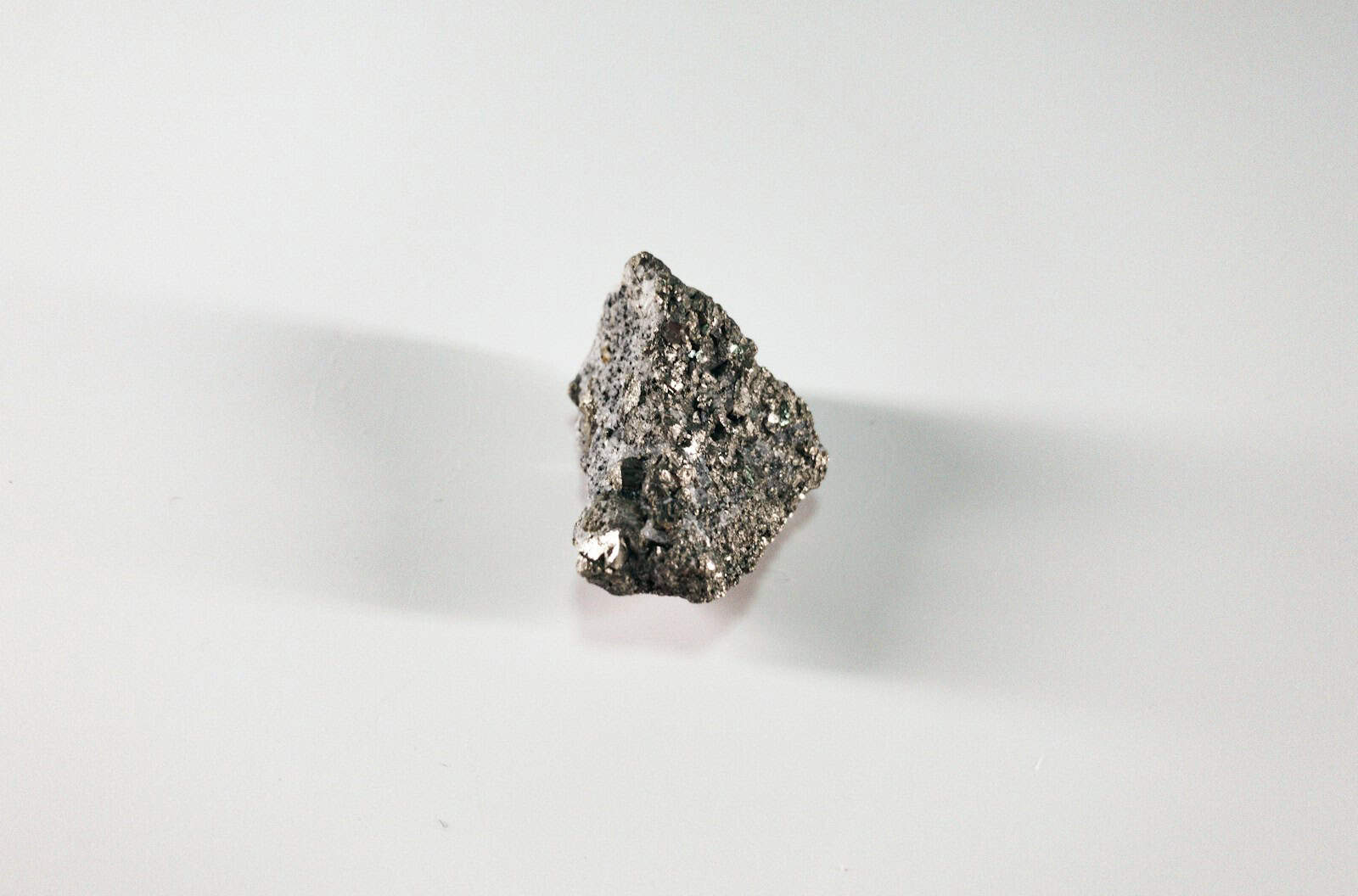China’s recent decision to restrict the export of seven rare earth elements has significant implications for global technology supply chains. These elements – Samarium, Gadolinium, Terbium, Dysprosium, Lutetium, Scandium, and Yttrium – play crucial roles in modern technology despite being relatively unknown to the general public. These rare earth metals are essential components in everything from smartphones and electric vehicles to military equipment and renewable energy systems, making China’s export controls a potential disruption to numerous industries worldwide.
The importance of these elements cannot be overstated. Samarium finds applications in headphones and nuclear reactors, while Gadolinium is vital for medical imaging technologies. Terbium and Dysprosium are critical for producing high-performance permanent magnets used in electric vehicles. Scandium enhances aluminum alloys and is widely used in RF front-end modules for smartphones. With China controlling approximately 85% of global processing capacity for these materials, these export restrictions represent a strategic move with far-reaching consequences.
Breakdown of China’s Rare Earth metals:
| Rare Earth Metal | Primary Uses | Industries Impacted |
|---|---|---|
| Samarium | – Samarium-cobalt magnets – Optical lasers & infrared equipment – Nuclear reactor control rods | Consumer Electronics, Military, Energy |
| Gadolinium | – MRI contrast agents – Magnets & data storage – Reactor shielding | Medical Imaging, Electronics, Nuclear |
| Terbium | – Green phosphors in lighting – Medical X-ray enhancement – Solid-state devices & fuel cells | Healthcare, Energy, Lighting |
| Dysprosium | – High-temp magnets (EVs, turbines) – Nuclear reactor control – Military systems | Clean Energy, Defense, Tech Manufacturing |
| Lutetium | – Oil refining catalyst – PET scan detectors – Cancer treatment (Lu-177) | Petrochemical, Healthcare, Nuclear Medicine |
| Scandium | – Aluminum alloys (aerospace, sports gear) – Metal halide lamps – Fuel cells | Aerospace, Lighting, Clean Energy |
| Yttrium | – White LEDs & CRT phosphors – Lasers, superconductors – Cancer therapy (Y-90) | Electronics, Optics, Medical Treatment |
China’s Rare Earth Metals
China’s decision to tighten export controls on seven rare earth elements—samarium, gadolinium, terbium, dysprosium, lutetium, scandium, and yttrium—has sent shockwaves through industries worldwide. These elements might sound obscure, but they’re the unsung heroes behind everything from electric vehicles and wind turbines to MRI machines and fighter jets. Below, we break down the strategic importance of each metal and how they quietly power the modern world.
Samarium
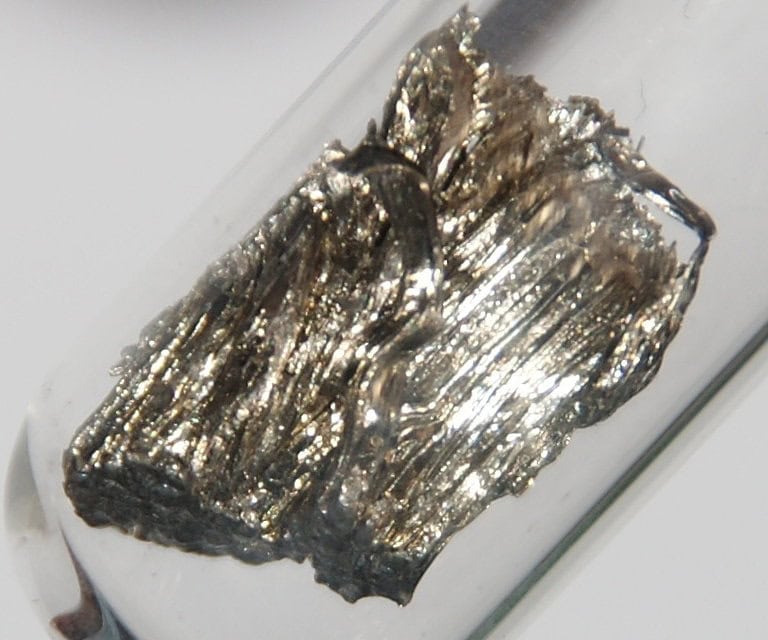
http://images-of-elements.com/, CC BY 1.0 https://creativecommons.org/licenses/by/1.0, via Wikimedia Commons
- Essential for samarium-cobalt magnets, known for their heat resistance and stability. These are used in headphones, precision-guided missiles, electric motors, and military aircraft.
- Used in infrared-absorbing glass and optical lasers.
- Functions as a key material in nuclear reactor control rods due to its neutron-absorption abilities.
Gadolinium
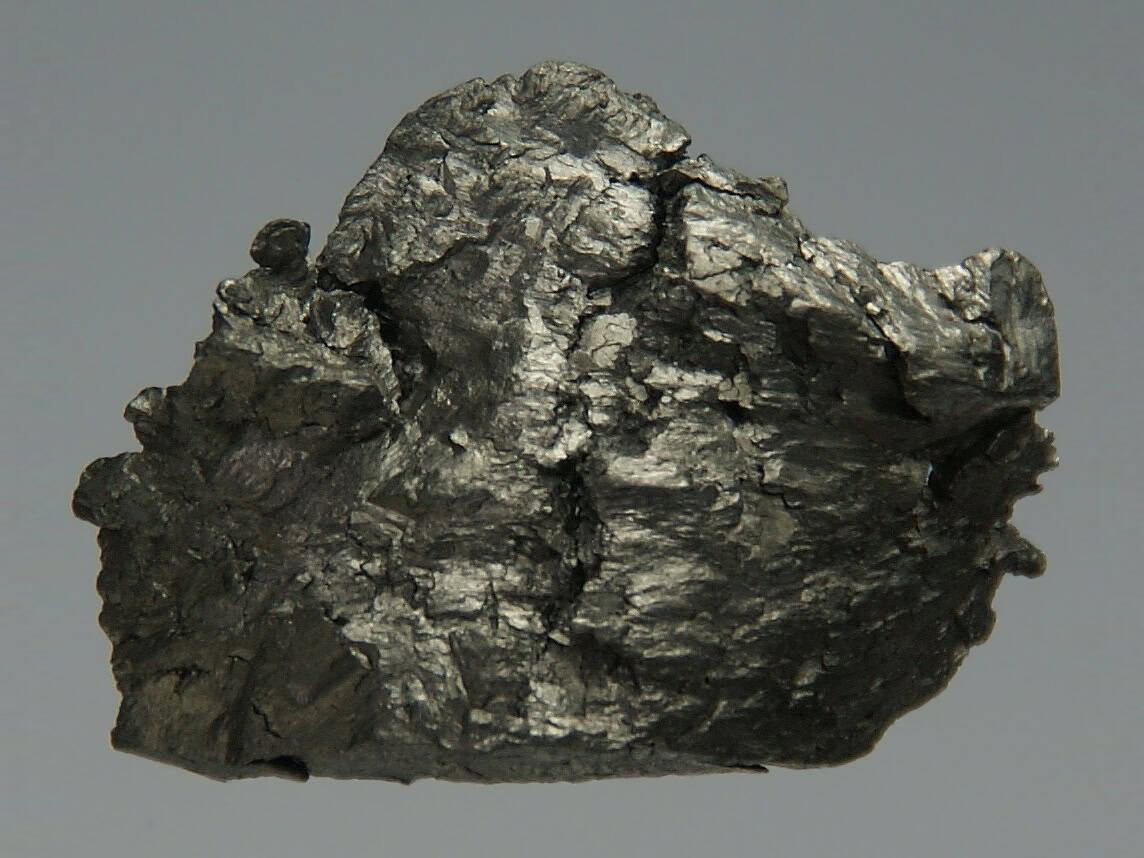
Jurii, CC BY 3.0 https://creativecommons.org/licenses/by/3.0, via Wikimedia Commons
- Widely used in medical imaging—especially as a contrast agent in MRI scans to help detect tumors and brain disorders.
- Used in data storage devices, magneto-optical drives, and high-performance electronics.
- Also deployed in nuclear reactor shielding thanks to its ability to capture thermal neutrons.
Terbium
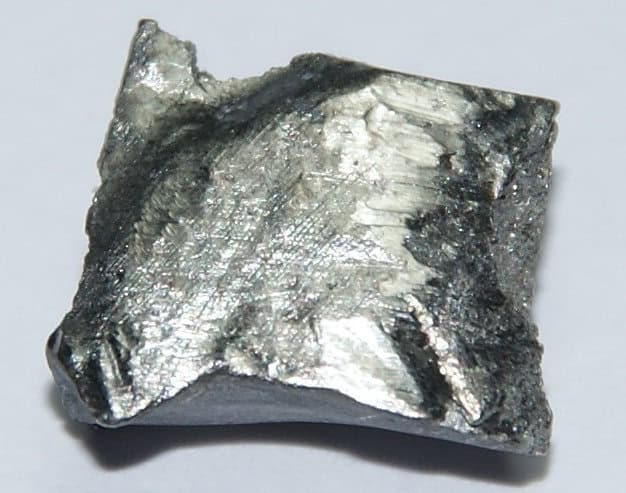
http://images-of-elements.com/, CC BY 1.0 https://creativecommons.org/licenses/by/1.0, via Wikimedia Commons
- Acts as a green phosphor in fluorescent lighting and energy-efficient bulbs.
- Improves the safety and clarity of medical X-ray scans by boosting screen brightness.
- Used in fuel cells and doped into materials to enhance solid-state devices.
Dysprosium
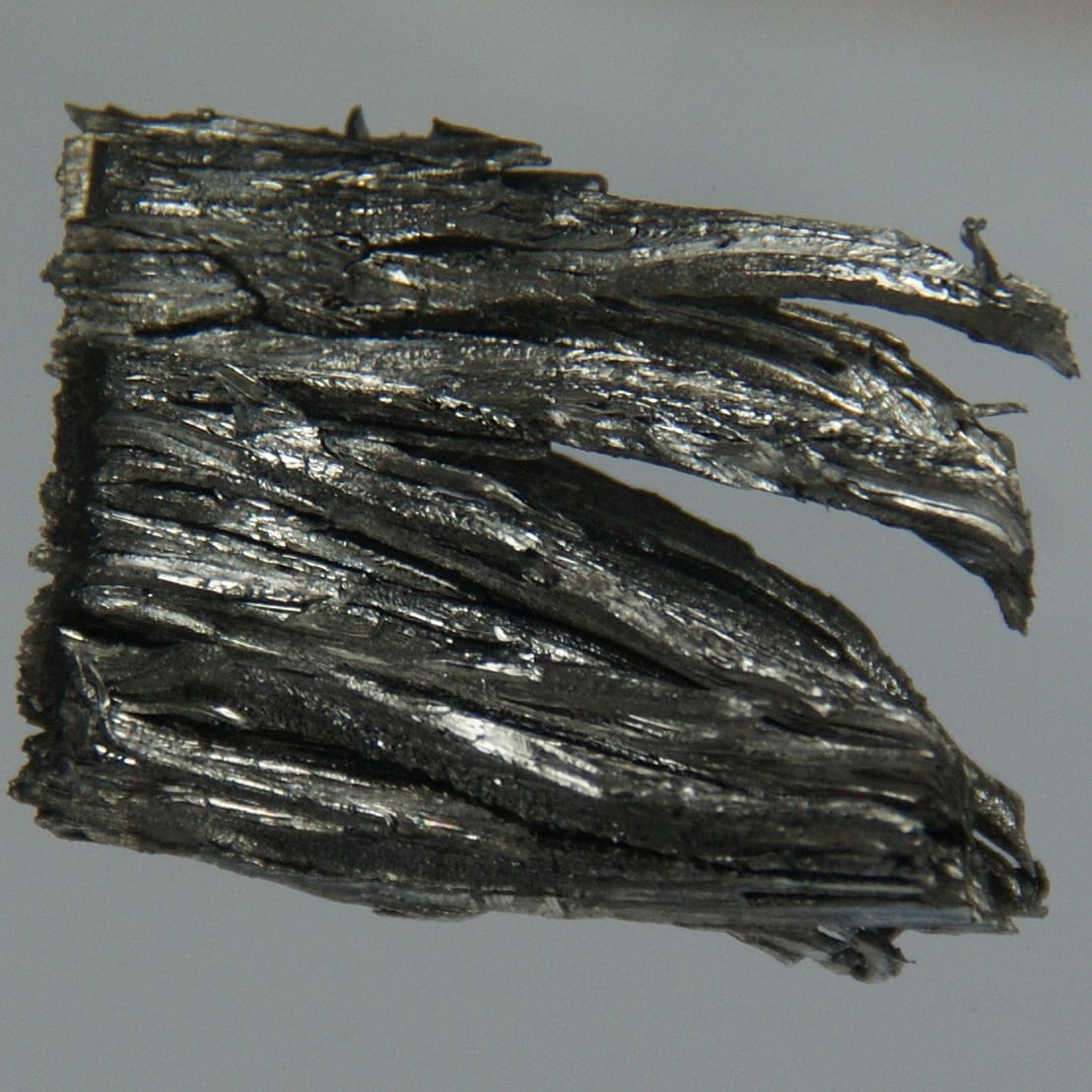
Jurii, CC BY 3.0 https://creativecommons.org/licenses/by/3.0, via Wikimedia Commons
- Vital to the production of high-temperature magnets used in electric vehicles (EVs), wind turbines, aircraft engines, and hard drives.
- Strengthens NdFeB magnets by increasing their resistance to demagnetization in extreme conditions.
- Also used in nuclear reactor control rods and specialized military hardware.
Lutetium
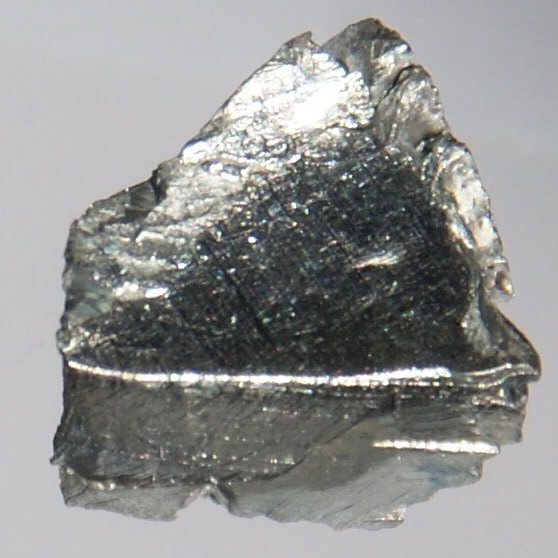
http://images-of-elements.com/, CC BY 1.0 https://creativecommons.org/licenses/by/1.0, via Wikimedia Commons
- One of the rarest and most expensive rare earths, used in cracking hydrocarbons during oil refining—a crucial step in producing gasoline and jet fuel.
- Used in PET scan detectors for medical imaging.
- Also utilized in lutetium-177-based cancer treatments, which are gaining traction in nuclear medicine for treating prostate and neuroendocrine tumors.
Scandium
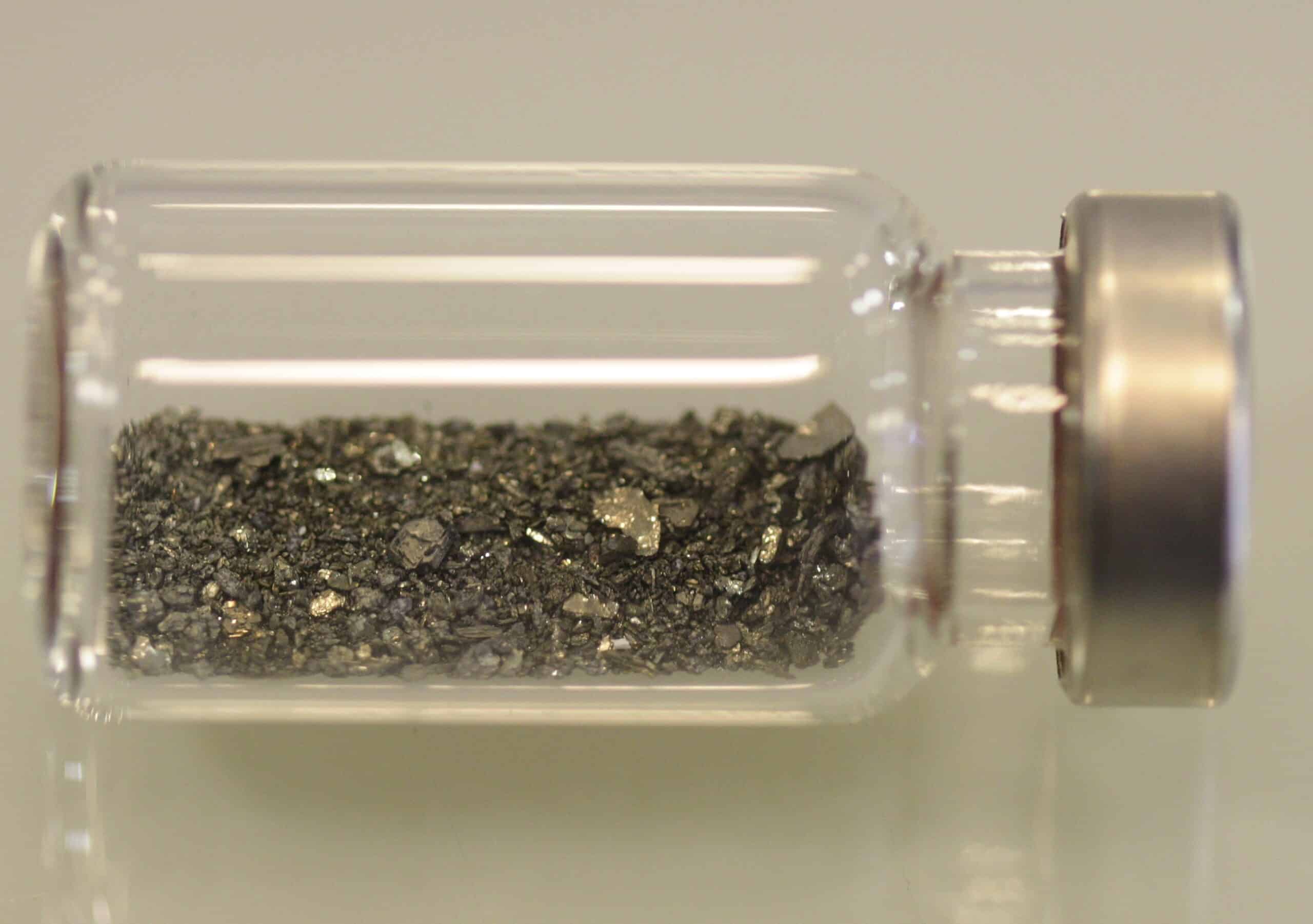
Rrausch1974, CC BY-SA 3.0 https://creativecommons.org/licenses/by-sa/3.0, via Wikimedia Commons
- Alloyed with aluminum to create ultra-light, high-strength materials used in aerospace components, MiG fighter jets, bike frames, and baseball bats.
- Used in metal halide lamps that simulate daylight—popular in stadiums, photography, and film lighting.
- Emerging applications include solid oxide fuel cells (SOFCs) for clean energy generation.
Yttrium
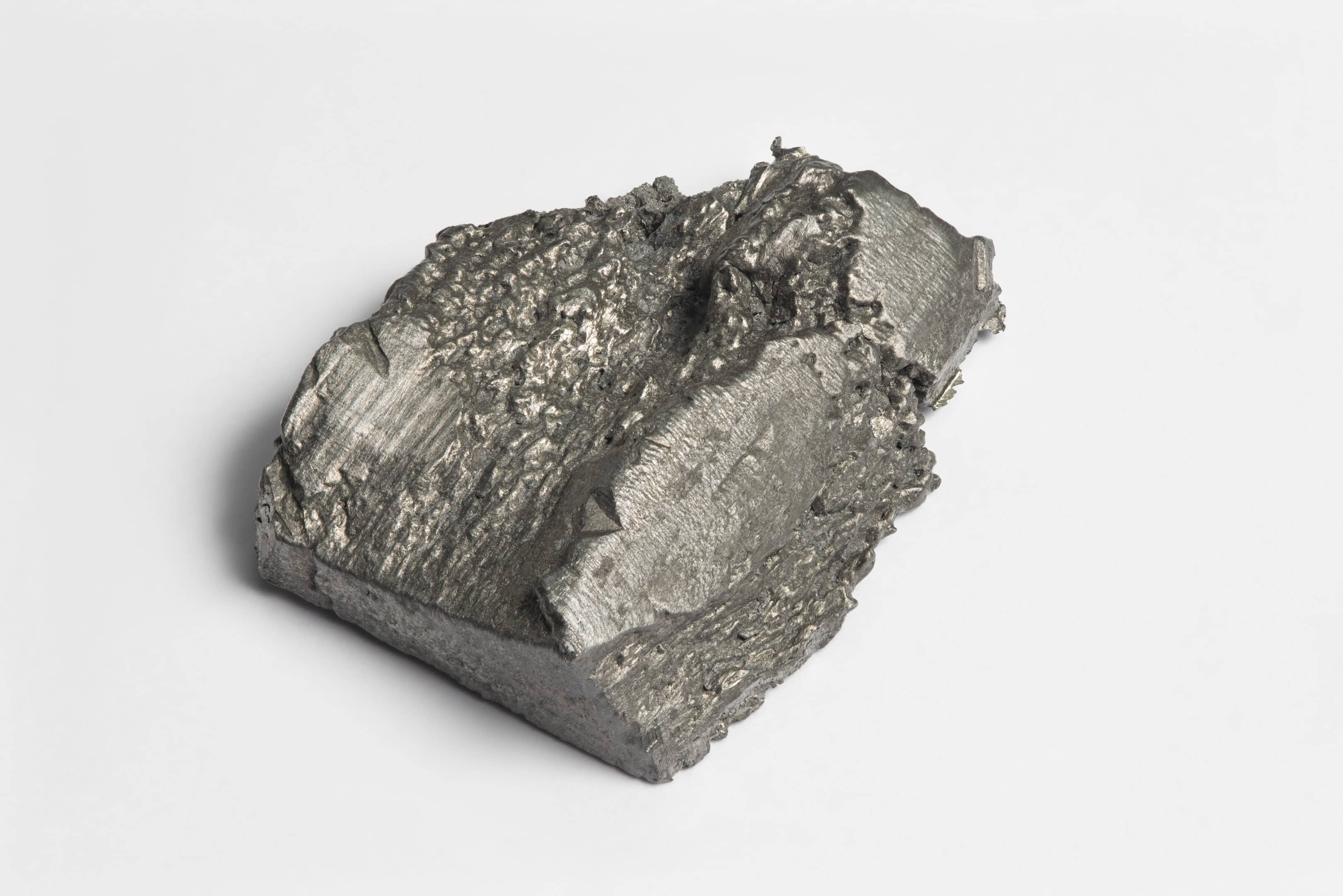
Jan Anskeit, CC BY-SA 4.0 https://creativecommons.org/licenses/by-sa/4.0, via Wikimedia Commons
- Crucial in making white LEDs and phosphors for CRT displays, which are still in use for industrial equipment and specialized displays.
- Used in laser systems, superconductors, and camera lenses.
- Has major applications in oncology, particularly in targeted cancer treatments using yttrium-90.
Why These Elements Matter More Than Ever
What ties these metals together is their indispensable role in cutting-edge technologies. They’re not just materials; they’re strategic assets. As nations race to secure clean energy, bolster defense capabilities, and advance medical tech, these rare earths serve as the foundation. With China currently controlling over 85% of global rare earth processing, these recent export controls could reshape global supply chains and spur new investments in mining, recycling, and alternative materials.
Understanding what these elements do helps explain why tech companies, defense contractors, and governments are scrambling to ensure access. The stakes are high—and they’re only getting higher.
Key Takeaways
- China’s export controls on seven rare earth elements threaten global technology supply chains for smartphones, electric vehicles, and renewable energy systems.
- These elements enable critical technologies despite their obscurity, with applications ranging from medical imaging to military equipment.
- Global manufacturers may face significant challenges as China leverages its dominant position in rare earth processing to advance strategic interests.
Overview of China’s Rare Earth Industry
China dominates the global rare earth market, producing around 90% of the world’s rare earths. These 17 elements are crucial components in defense systems, electric vehicles, electronics, and energy technologies.
The country’s strategic position in rare earth production has evolved over decades. China recognized the value of these elements early on and developed extensive mining and processing capabilities.
Recent export controls have targeted seven specific rare earth elements: Samarium, Gadolinium, Terbium, Dysprosium, Lutetium, Scandium, and Yttrium. These restrictions have significant implications for global supply chains, particularly in technology manufacturing.
The rare earth industry in China is structured around several key sectors:
- Magnets: ~30% of total rare earth use
- Metallurgical applications: ~15%
- Chemical and petroleum: ~10%
Source: USGS Publications Warehouse
China’s control of rare earth elements presents both economic and geopolitical challenges. The recent export restrictions on materials containing scandium and dysprosium have threatened global chipmaking supply chains.
Industrial applications for these elements continue to expand, increasing their strategic importance. As technology advances, the demand for these specialized metals grows, further highlighting China’s pivotal role in the global supply chain.
Samarium: Characteristics and Applications
Samarium is a silvery, hard metal that belongs to the lanthanide series of rare earth elements. It moderately oxidizes when exposed to air and typically exhibits a +3 oxidation state, making it valuable for several specialized applications.
Permanent Magnets
Samarium-cobalt (SmCo) magnets represent one of the most significant applications of this rare earth metal. These magnets are prized for their exceptional magnetic strength and stability at high temperatures, allowing them to operate in environments up to 350°C without losing magnetic properties.
Unlike neodymium magnets, SmCo magnets offer superior corrosion resistance, eliminating the need for protective coatings in many applications. This makes them ideal for use in harsh environments.
The aerospace and defense industries heavily rely on SmCo magnets for critical components in aircraft, missile guidance systems, and radar equipment. Their ability to maintain magnetic strength at extreme temperatures makes them essential for these demanding applications.
Medical devices like magnetic resonance imaging (MRI) machines also utilize samarium-cobalt magnets for their reliability and consistent performance characteristics.
Nuclear Reactor Neutrons
Samarium plays a crucial role in nuclear reactors as a neutron absorber. Samarium-149, a specific isotope, acts as a “neutron poison” that captures neutrons in the reactor core, helping control the nuclear chain reaction.
Nuclear engineers incorporate samarium into control rods to regulate reactor output safely. The element’s high neutron absorption cross-section makes it particularly effective for this purpose.
During reactor operation, samarium-149 builds up from the decay of neodymium-149, creating what’s known as “samarium poisoning.” This phenomenon must be carefully managed during reactor startup and shutdown procedures.
The element’s stability under radiation makes it valuable for long-term reactor components. This property ensures consistent performance throughout the operational lifetime of nuclear facilities.
Cancer Treatment
Samarium-153 has emerged as an important isotope in targeted cancer therapy. When formulated as samarium lexidronam (153Sm-EDTMP), it selectively targets and accumulates in bone tissue affected by cancer.
This radiopharmaceutical emits beta particles that destroy cancer cells while minimizing damage to surrounding healthy tissue. The approach is particularly effective for treating painful bone metastases from primary cancers like prostate and breast cancer.
Patients receiving samarium-153 therapy often experience significant pain relief within 1-2 weeks of treatment. This improvement in quality of life makes it a valuable palliative care option.
The relatively short half-life of samarium-153 (approximately 46 hours) means radiation exposure is limited, enhancing its safety profile. Medical professionals can administer precise doses while minimizing unwanted side effects to healthy tissues.
Gadolinium: Properties and Uses
Gadolinium is a rare earth metal with unique properties that make it valuable in several high-tech applications. This silvery-white metal possesses exceptional magnetic characteristics, particularly its strong paramagnetic nature at room temperature.
Medical Imaging
Gadolinium-based contrast agents (GBCAs) have revolutionized magnetic resonance imaging (MRI) technology. These compounds dramatically enhance the visibility of internal body structures by altering the magnetic properties of nearby water molecules.
When injected into patients, gadolinium compounds help doctors identify abnormalities like tumors, inflammation, and blood vessel problems. The metal’s seven unpaired electrons create a strong magnetic moment that significantly improves image quality.
Different gadolinium chelates are used depending on the specific imaging needs. Common formulations include:
- Gadopentetate dimeglumine (Magnevist)
- Gadobutrol (Gadavist)
- Gadoterate meglumine (Dotarem)
While extremely useful, medical professionals must use GBCAs with caution in patients with kidney problems, as gadolinium can accumulate in tissues and potentially cause nephrogenic systemic fibrosis.
Neutron Radiography
Gadolinium’s exceptional ability to absorb neutrons makes it invaluable for neutron radiography applications. The metal has the highest thermal neutron capture cross-section of any naturally occurring element.
This property allows gadolinium to be used in nuclear reactor shielding and control rods. Engineers incorporate gadolinium into nuclear fuel assemblies as a “burnable poison” to help control reactivity in new fuel elements.
In neutron radiography, gadolinium-based converters transform neutron radiation into visible light images. This technique reveals internal structures invisible to X-rays, particularly in materials containing hydrogen.
Industrial applications include inspecting aircraft components, detecting corrosion, and examining nuclear fuel elements for defects without destructive testing.
Refrigeration Systems
Gadolinium’s unique magnetic properties have opened new possibilities for advanced refrigeration technologies. The metal exhibits a strong magnetocaloric effect, changing temperature when exposed to varying magnetic fields.
This phenomenon forms the basis for magnetic refrigeration systems, which offer several advantages over traditional cooling methods:
- Higher energy efficiency (20-30% more efficient)
- Elimination of environmentally harmful refrigerants
- Reduced noise levels
- Longer operational lifespan
Researchers are developing gadolinium alloys with optimized magnetocaloric properties for commercial refrigeration applications. These systems could potentially transform how we cool everything from food preservation units to air conditioning systems.
Several corporations are currently testing prototypes of gadolinium-based magnetic refrigerators that could reach market viability within the next decade.
Terbium: Unique Features and Industrial Use
Terbium is a rare earth element with exceptional properties that make it valuable across several high-tech applications. This silvery-white metal possesses unique magnetic and luminescent characteristics that are crucial in modern technology.
Solid-State Devices
Terbium plays a vital role in solid-state technology due to its distinctive properties. It is essential for low-energy lightbulbs and serves as a key component in manufacturing energy-efficient fluorescent lamps and LED screens. When combined with other materials, terbium compounds emit a bright green luminescence under certain conditions.
In electronic displays, terbium is used as a phosphor activator. The element’s atoms get excited by energy and emit visible light when returning to their ground state, creating vibrant colors in screens.
Terbium is also crucial in X-ray intensifying screens, improving medical imaging safety and quality. Its compounds convert X-ray energy into visible light, reducing radiation exposure for patients while enhancing image clarity.
Fuel Cells
In the renewable energy sector, terbium compounds serve as important catalysts in fuel cell technology. These compounds help facilitate the electrochemical reactions that convert chemical energy into electricity within fuel cells.
Terbium oxide is particularly valuable in solid oxide fuel cells (SOFCs) for its ability to improve ionic conductivity at lower temperatures. This enhancement makes fuel cells more energy efficient and extends their operational lifespan significantly.
Recent advancements in terbium-based materials have led to more stable and efficient fuel cells for both stationary power generation and potentially for transportation applications. These developments are particularly important as the world transitions toward cleaner energy sources.
China currently dominates the terbium supply chain, controlling much of the mining and processing of this critical element used in green technology applications.
Dysprosium: Importance and Technological Applications
Dysprosium is one of the most critical rare earth elements due to its unique magnetic properties and high thermal stability. This silvery-white metal plays a crucial role in various high-tech applications where strong magnets and heat resistance are required.
Advanced Electronics
Dysprosium is essential in manufacturing control rods for nuclear reactors because of its exceptional neutron-absorbing capabilities. The element helps regulate nuclear reactions safely by capturing neutrons that would otherwise cause chain reactions.
In data storage devices, dysprosium compounds contribute to improved magnetic storage capacity and performance. Hard disk drives and other memory devices benefit from dysprosium-enhanced materials that allow for smaller components with higher data density.
Electric vehicles rely on dysprosium for their motors and battery systems. The element helps motors maintain performance at high temperatures, which is crucial for ensuring reliability during continuous operation.
Dysprosium is also found in lasers, LED lighting systems, and commercial lighting applications where heat resistance is vital.
High-Intensity Magnets
Dysprosium is added to neodymium-iron-boron (NdFeB) magnets to enhance their coercivity and temperature resistance. This property allows these magnets to maintain strength at high temperatures, which is essential for motors in electric vehicles and wind turbines.
Without dysprosium, permanent magnets would lose their magnetic properties at elevated temperatures, making them unusable in many applications. The element typically constitutes around 1-6% of these high-performance magnets.
Wind turbine generators require dysprosium-enhanced magnets to operate efficiently. Each large turbine may contain hundreds of kilograms of rare earth magnets, with dysprosium being a critical component.
Industrial motors, hybrid vehicles, and power generators also depend on dysprosium-containing magnets for reliable performance in demanding conditions.
Lutetium: Role and High-Tech Uses
Lutetium, though one of the least abundant rare earth elements, plays vital roles in specialized applications across medical imaging and optical technologies. Its unique properties make it particularly valuable in high-performance systems.
PET Scan Detectors
Lutetium is a critical component in modern medical imaging technology, particularly in Positron Emission Tomography (PET) scanners. Lutetium oxyorthosilicate (LSO) crystals doped with cerium serve as scintillators in these advanced diagnostic machines.
These crystals convert gamma rays produced during the scanning process into visible light that detection systems can measure. The resulting images help doctors identify cancers, brain disorders, and heart problems with remarkable precision.
LSO crystals containing lutetium offer significant advantages over older materials:
- Faster response time
- Higher light output
- Better energy resolution
- Improved image quality
These properties allow for clearer, more detailed scans that can detect smaller abnormalities earlier in disease progression. PET scanners using lutetium-based detectors are now standard in advanced medical facilities worldwide.
High-Refraction Optics
Lutetium’s optical properties make it valuable in specialized glass and lens manufacturing. When incorporated into glass formulations, lutetium compounds can significantly increase the refractive index without adding excessive weight.
Lutetium is primarily used in oil refineries for cracking hydrocarbons, making it essential to the petrochemical industry. However, its optical applications extend beyond industrial uses.
High-performance camera lenses, particularly those used in aerospace applications and scientific instruments, benefit from lutetium-containing glass elements. These specialized optics deliver:
- Superior light transmission
- Reduced chromatic aberration
- Enhanced image sharpness
Telescope manufacturers also incorporate lutetium compounds in specialized observatory equipment where maximum light capture and minimal distortion are essential for astronomical research.
Scandium: Distinct Uses Across Industries
Scandium is one of the least abundant rare earth elements but offers exceptional properties when alloyed with other metals. This lightweight element significantly enhances strength and heat resistance in various applications, making it highly valuable despite its scarcity.
Aerospace Components
Scandium-aluminum alloys have revolutionized aerospace manufacturing by providing exceptional strength-to-weight ratios. These alloys are typically 3-4 times stronger than traditional aluminum while maintaining lightweight properties.
Aircraft manufacturers use scandium alloys in fuselage components, wing structures, and landing gear systems. The addition of just 0.5% scandium can drastically improve an aluminum alloy’s performance characteristics.
Russian MiG fighter jets notably incorporated scandium alloys in their construction, demonstrating the element’s strategic importance in military aviation. Modern commercial aircraft also benefit from scandium-reinforced components that reduce fuel consumption through weight reduction.
Scandium’s high melting point (1541°C) and resistance to thermal shock make it ideal for components exposed to extreme temperature variations encountered during flight.
Sporting Goods Manufacturing
Scandium has found a significant niche in high-performance sporting equipment manufacturing. Baseball and softball bats made with scandium-aluminum alloys offer superior performance without excessive weight.
These alloys provide:
- Enhanced vibration dampening
- Better energy transfer upon impact
- Reduced player fatigue
- Increased durability
Bicycle frames featuring scandium alloys combine lightweight construction with exceptional strength. Professional cyclists often prefer these frames for competitive racing, particularly in mountain biking where durability meets lightweight requirements.
Lacrosse sticks, tennis rackets, and golf club components also utilize scandium alloys. The element’s ability to create stronger welds without adding significant weight makes it particularly valuable for equipment where precise weight distribution affects performance.
Yttrium: Versatility and Application Spectrum
Yttrium stands out among rare earth elements for its exceptional versatility in high-tech applications. This silvery metal contributes to numerous technologies that have become essential in our modern world.
LED Phosphors
Yttrium plays a crucial role in lighting technology as a primary component in white LED lights. When combined with other elements to form phosphors, yttrium compounds convert blue light into white light in LED bulbs.
These yttrium-based phosphors create the warm white light that makes LEDs practical for home and commercial lighting. The element’s ability to emit light efficiently when excited helps manufacturers produce energy-saving lighting solutions.
Yttrium phosphors also enhance color rendering in displays, making them valuable in television sets and computer monitors. Modern smartphones and tablets rely on these compounds for their vibrant, energy-efficient screens.
As global demand for energy-efficient lighting continues to grow, yttrium’s importance in LED technology has made it strategically valuable in the clean energy transition.
Yttrium Aluminum Garnet Lasers
Yttrium aluminum garnet (YAG) forms the backbone of some of the most versatile laser systems in use today. These crystals, doped with elements like neodymium, create powerful, precise beams used in industrial cutting, medical procedures, and scientific research.
YAG lasers offer exceptional beam quality and stability, making them ideal for delicate operations like eye surgery and micro-machining. Their durability allows for continuous operation in demanding industrial environments.
In medical applications, YAG lasers treat conditions ranging from kidney stones to cancer. The precision of these lasers enables doctors to target diseased tissue while minimizing damage to surrounding areas.
YAG crystals also serve as essential components in scientific instruments that measure properties of materials at extremely small scales. Engineers incorporate them into specialty camera lenses for their unique optical properties.
Global Demand and Economic Significance
The global market for rare earth elements has grown dramatically over the past decade. Annual demand now exceeds 200,000 tons worldwide, with projections showing potential growth to 315,000 tons by 2030.
China currently dominates the rare earth supply chain, producing approximately 70% of the world’s rare earth oxides and controlling about 85% of processing capacity. This market concentration has created significant economic and security concerns for other nations.
Key rare earth elements face particularly high demand growth:
| Element | Primary Uses | Annual Growth Rate |
|---|---|---|
| Dysprosium | Magnets, electronics | 7-9% |
| Terbium | Displays, magnets | 8-10% |
| Scandium | Aerospace, fuel cells | 11-13% |
| Yttrium | Lasers, superconductors | 6-8% |
The economic value of these materials extends far beyond their raw prices. A single kilogram of dysprosium oxide (currently valued at $250-350) enables the production of electric vehicle components worth thousands of dollars.
Recent export restrictions by China have sent shockwaves through global markets. These controls specifically target medium and heavy rare earths like scandium and dysprosium that are critical for chipmaking.
Countries including the US, Australia, and Canada are now investing billions to develop alternative supply chains. However, developing competitive processing capabilities outside China remains challenging due to environmental concerns and high capital requirements.
The strategic importance of these elements continues to grow as industries like renewable energy, defense, and advanced computing become increasingly dependent on their unique properties.
Environmental and Regulatory Considerations
Mining and processing rare earth elements like samarium, gadolinium, and dysprosium creates significant environmental challenges. These processes often generate toxic waste and radioactive byproducts that can contaminate soil and groundwater if not properly managed.
China, as the world’s largest producer controlling about 90% of global rare earth production, has implemented stricter environmental regulations in recent years. The country’s efforts aim to address the environmental damage caused by decades of unregulated mining.
China recently strengthened its position by imposing export controls on medium and heavy rare earth materials. These restrictions officially serve national security purposes but also provide leverage in international trade disputes.
The Chinese government formalized oversight through Regulations on Rare Earth Administration, which clearly define rare earths including lanthanum, cerium, and neodymium.
Key Environmental Concerns:
- Acid mine drainage
- Radioactive waste management
- High water consumption
- Energy-intensive processing
- Land degradation
Other countries are now developing alternative supply chains and more environmentally friendly extraction methods. These include recycling rare earth elements from electronic waste and developing cleaner processing technologies.
The environmental impact varies by element. Terbium and dysprosium extraction typically causes more environmental harm than scandium or yttrium due to different geological occurrences and extraction requirements.
Research and Development In Rare Earth Elements
China has been investing heavily in rare earth element (REE) research since the late 1970s. Their output increased dramatically from just over 1,000 tons in 1978 to 11,860 tons in 1986, marking a significant production spike in the industry’s early development phase in China.
Recent research has focused on more sustainable extraction methods. Phytomining has emerged as an ecologically sound technique to extract rare earth elements from contaminated soils where traditional mining methods aren’t economically viable.
Scientists are particularly focused on developing technologies for recycling rare earth elements from electronic waste. This research direction aims to reduce dependence on new mining operations and mitigate environmental impact.
Major applications driving REE research include:
- Energy technologies: Batteries, wind turbines, hydrogen storage
- Electronics: Displays, sensors, hard drives
- Medical equipment: MRI machines, lasers, diagnostic tools
- Defense applications: Guidance systems, radar, communications
China’s recent export controls on medium and heavy rare earth materials have intensified global research efforts. Countries worldwide are now investigating alternative sources and substitutes.
Research into magnesium-rare earth alloys continues to advance, with particular interest in neodymium, gadolinium, dysprosium, erbium, and ytterbium. These specialized alloys offer exceptional strength-to-weight ratios for aerospace and automotive applications.
Universities and corporate labs are developing more efficient separation processes. Traditional rare earth separation is complex and expensive, requiring significant chemical inputs and generating waste streams.
Frequently Asked Questions
Rare earth elements play crucial roles in modern technology despite their misleading name. These metals possess unique properties that make them essential components in everything from smartphones to defense systems.
What industrial applications do Samarium, Gadolinium, Terbium, Dysprosium, Lutetium, Scandium, and Yttrium have?
Samarium is widely used in manufacturing headphones, personal stereos, optical lasers, and nuclear reactors. Its magnetic properties make it especially valuable in precision instruments.
Gadolinium finds applications in medical imaging as a contrast agent for MRIs. It’s also used in nuclear reactors and specialized electronics due to its unique atomic properties.
Terbium is essential for producing green phosphors in display screens and LED lighting. It’s also used in solid-state devices and naval sonar systems.
Dysprosium strengthens permanent magnets at high temperatures, making it critical for electric vehicle motors and wind turbine generators. Without it, these technologies would be less efficient.
Lutetium is employed in petroleum refining catalysts and medical applications. Its isotopes are valuable in cancer treatments and advanced imaging techniques.
Scandium, often added to aluminum alloys, creates extremely strong, lightweight materials used in aerospace and sports equipment. Even small amounts significantly improve metal performance.
Yttrium is crucial for producing red phosphors in displays and LED lights. It’s also used in laser technologies and as a stabilizer in industrial ceramics.
How has China’s control over rare earth metals influenced global supply chains?
China’s recent export controls on medium and heavy rare earth materials have created significant supply chain disruptions globally. These restrictions directly impact industries dependent on these materials, from electronics to defense.
China currently produces over 70% of the world’s rare earth elements, giving it considerable leverage in international trade. Their dominance stems from decades of investment in mining and processing technologies.
The export restrictions are officially justified as safeguarding national security interests. However, many analysts view these controls as strategic moves in broader trade negotiations and technological competition.
Manufacturing nations heavily dependent on these materials face difficult choices: securing alternative suppliers, stockpiling materials, or developing substitutes. None of these options offers quick or easy solutions.
What specific roles do rare earth elements play in modern technology and electronics manufacturing?
Rare earth elements are essential components in smartphones, enabling vibration, speaker function, and display colors. A typical smartphone contains several different rare earth elements performing specific functions.
In renewable energy, these materials are critical for wind turbine magnets and electric vehicle motors. Neodymium and dysprosium, in particular, create the powerful permanent magnets that make these technologies possible.
Computer hard drives, MRI machines, and precision-guided weapons all depend on rare earth elements for their core functionality. Without these materials, many modern technologies would be impossible or prohibitively expensive.
The elements’ unique electronic and magnetic properties allow for miniaturization of components. This enables the development of smaller, more powerful electronic devices that consumers expect.
Can you explain the geopolitical implications of the rare earth elements market?
The rare earth market has become a focal point in international relations, especially between China and Western nations. Control of these resources translates directly into technological and economic advantage.
China’s market dominance didn’t happen by accident. The country invested strategically in mining and processing capabilities while other nations reduced their operations due to environmental concerns and economics.
Nations including the United States, Australia, and Canada are now rushing to develop alternative supply chains. This includes reopening old mines, exploring new deposits, and investing in processing facilities.
The European Union has classified rare earth elements as critical materials for its economic security. This designation has prompted investment in both domestic sources and international partnerships to secure supplies.
What are the challenges in recycling rare earth elements, particularly those used in high-tech devices?
Recycling rare earth elements presents significant technical challenges. These materials are typically used in small amounts and are often integrated into complex components, making separation difficult.
Current recycling processes are energy-intensive and often not economically viable. The cost of extracting and purifying recycled rare earths frequently exceeds the price of newly mined materials.
The 17 rare earth elements have similar chemical properties, making separation a sophisticated process. This chemistry that makes them valuable also makes them difficult to isolate from each other.
Consumer electronics represent a significant potential source of recyclable rare earths. However, collection systems and incentives for recycling these devices remain inadequate in most countries.
How are countries outside of China responding to the scarcity of rare earth metals?
The United States has designated rare earth elements as critical minerals and is funding research into alternative sources and processing. Reopened mines like Mountain Pass in California represent initial steps toward rebuilding domestic capability.
Japan has invested in urban mining—extracting rare earths from electronic waste. They’ve also formed strategic partnerships with countries like Australia to secure access to newly mined materials.
Australia has expanded rare earth mining operations significantly. As home to some of the world’s largest deposits outside China, Australian companies are positioning themselves as reliable alternative suppliers.
European nations are pursuing a dual strategy of securing international supplies while researching alternatives. This includes developing materials that can substitute for rare earths in certain applications.
Research into deep-sea mining represents a controversial frontier in the search for new rare earth sources. The environmental implications remain poorly understood, creating tension between resource needs and conservation goals.

